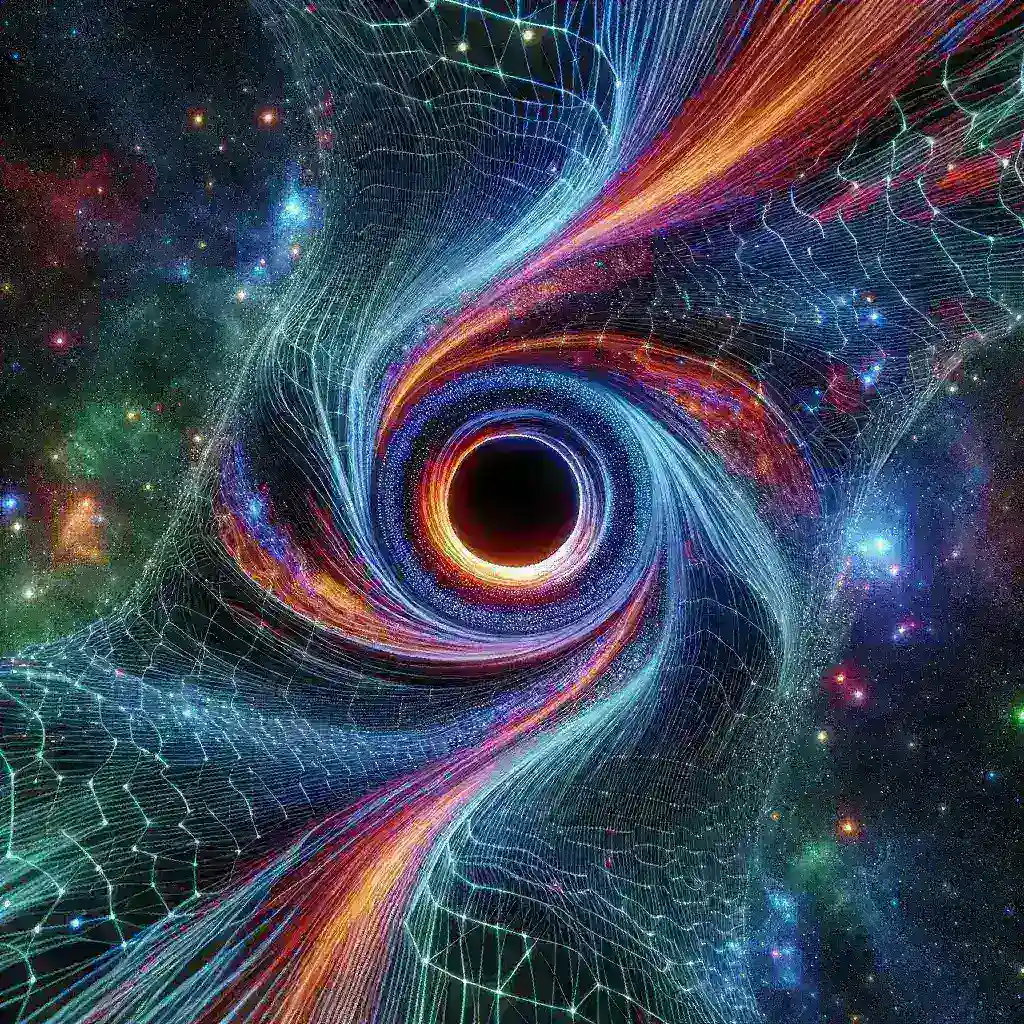Introduction
The mysteries of black holes have long captivated astronomers and physicists alike. Among these enigmatic phenomena is the accretion disk, a swirling mass of gas and dust that spirals into a black hole, ultimately feeding it. Recent advancements in AI algorithms have allowed scientists to simulate these accretion disks with unprecedented accuracy, giving us deeper insights into the behavior of matter under extreme gravitational conditions.
Understanding Black Hole Accretion Disks
Before diving into the role of AI, it’s essential to comprehend what black hole accretion disks are. When a black hole pulls in surrounding material, an accretion disk forms due to angular momentum that prevents the material from falling straight in. This disk is characterized by:
- High Temperatures: The friction and gravitational forces heat the material to millions of degrees Celsius.
- Radiation Emission: As matter accelerates and collides, it emits X-rays and other forms of radiation, which can be detected by telescopes.
- Complex Dynamics: The movement and interaction of particles in the disk create turbulent flows, leading to fascinating and complicated behaviors.
The Role of AI in Simulating Accretion Disks
Traditional methods of simulating accretion disks often fell short due to the immense complexity and the computational power required. However, the introduction of AI algorithms has drastically changed the landscape:
1. Advanced Computational Techniques
AI algorithms, particularly those utilizing machine learning and deep learning, are capable of processing vast amounts of data much quicker than traditional computational methods. This allows researchers to create more detailed and accurate models of accretion disks.
2. Predictive Analysis
With the power of AI, scientists can predict how matter behaves in varying conditions. For instance, how quickly material spirals in, or how radiation is emitted at different temperatures can now be modeled with remarkable precision.
3. Real-time Simulations
AI enables researchers to run simulations in real-time, which is particularly useful in observing transient phenomena. This means that scientists can watch the evolution of an accretion disk as it happens, rather than relying on post-processing of static data.
Historical Context
The journey of understanding black hole accretion disks began decades ago with the formulation of the general theory of relativity by Albert Einstein. As telescopes developed and the need for simulation grew, researchers turned to numerical simulations in the late 20th century. These early methods laid the groundwork for today’s AI-driven approaches.
The Evolution of Simulation Techniques
Initially, scientists used analytical models, which offered limited insight. As computational technology progressed, hydrodynamic simulations became feasible, allowing researchers to examine fluid dynamics in accretion disks. Yet, these methods remained resource-intensive and often simplified the complexities of real-life scenarios.
Future Predictions
The future of simulating black hole accretion disks appears bright, particularly with the continuous evolution of AI technologies:
- Greater Accuracy: As algorithms improve, we can expect simulations to reflect even more intricate details of accretion disk dynamics.
- Interdisciplinary Applications: Insights gained from these simulations could influence other fields such as astrophysics, materials science, and even quantum computing.
- Public Engagement: Enhanced visualizations resulting from AI simulations can lead to better public understanding and interest in astrophysics.
Pros and Cons of AI Simulations
While the benefits of using AI for simulating black hole accretion disks are significant, it is crucial to consider potential drawbacks:
Pros
- Efficiency: AI reduces computational time and resources, enabling quicker results and iterations.
- Complex Problem Solving: AI can uncover patterns and solutions that might be missed by human researchers.
- Increased Accessibility: With more user-friendly AI tools, a broader range of researchers can engage with complex simulations.
Cons
- Data Dependency: The accuracy of AI predictions relies heavily on the quality and quantity of training data.
- Complex Interpretations: AI models can sometimes produce results that are difficult to interpret, leading to challenges in verifying scientific accuracy.
- Ethical Considerations: As AI grows, ethical questions about data usage and decision-making in scientific research rise.
Real Examples of AI in Action
Several recent studies exemplify the successful application of AI in simulating black hole accretion disks:
Case Study 1: The Simulation of the M87 Galaxy
Using AI algorithms, researchers simulated the black hole at the center of the M87 galaxy, providing insights into the dynamics of its accretion disk. The results confirmed existing theories while offering new perspectives on matter behavior near a supermassive black hole.
Case Study 2: The Event Horizon Telescope (EHT)
The EHT collaboration, which previously captured the first image of a black hole, utilized AI to refine the data from various telescopes. Their algorithms helped stitch together the intricate details of the accretion disk, resulting in unprecedented clarity.
Cultural Relevance
The fascination with black holes transcends scientific communities. Cultural productions—from films to books—often explore the themes surrounding black holes and the mysteries of the universe. AI-driven simulations contribute not only to scientific discourse but also to popular culture, inspiring the next generation of astronomers and physicists.
Conclusion
The integration of AI algorithms in simulating black hole accretion disks marks a significant leap forward in astrophysical research. With the potential to enhance our understanding of the universe’s most mysterious objects, the future of these simulations promises to unveil even more secrets of the cosmos. As technology continues to evolve, the collaboration between AI and astrophysics will undoubtedly lead to new discoveries that can reshape our understanding of the universe.

